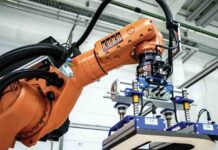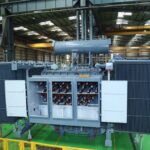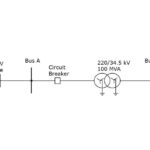
Self-healing grids are advanced, automated power distribution networks that detect, isolate, and resolve faults in real-time, restoring electricity within seconds, often without human intervention. These systems use distributed intelligence, smart sensors, and sophisticated algorithms to maintain power flow even during equipment failures or extreme events. Imagine a power grid acting like a living organism – sensing trouble, rerouting energy, and healing itself instantly. This offers immediate benefits: minimised downtime, lower operational risks, and improved customer satisfaction.
For technical professionals, self-healing grids signify progress in grid automation, resilience, and data-driven control. Utilising local measurements, automated switching, and real-time analytics, they rapidly restore power, sometimes before grid operators are aware of issues. These grids adapt to disruptions from storms, cyber threats, or equipment failures, ensuring critical infrastructure remains powered. As the grid becomes more complex with renewables, electric vehicles, and distributed energy, self-healing capabilities are crucial for reliability and growth. For businesses and utilities, adopting self-healing grids means investing in a resilient energy backbone that supports innovation, sustainability, and uninterrupted operations – a technical revolution combining automation, advanced control, and robust communications for smarter, more reliable grids.
Key Features
- Real-time monitoring and fault detection
- Automated isolation and restoration of affected sections
- Integration with renewable energy and storage systems
- Enhanced resilience against disasters and cyber threats
Why Self-Healing Grids Matter for India
India’s grid faces some unique challenges:
- Frequent outages due to aging infrastructure and rising demand
- Economic losses from power interruptions impacting industry and households
- Integration of renewables like solar and wind, which are inherently variable
- Disaster vulnerability from extreme weather events
Self-healing grids address these pain points by:
- Improving Reliability: Outages are detected and resolved rapidly, reducing downtime.
- Reducing Economic Losses: Faster recovery minimises financial impact on businesses and households
- Supporting Renewable Integration: Automated controls can manage the intermittency of renewables more effectively.
- Enhancing Disaster Resilience: Automated restoration improves response during storms and other emergencies
Technical Foundations of Self-Healing Grids
To achieve self-healing capabilities, several technologies must work in concert:
- Smart Sensors and IoT Devices: Deployed throughout the grid to monitor voltage, current, and fault conditions in real time
- Automated Control Systems: Distribution Automation Systems like FLISR (Fault Location, Isolation, and Service Restoration) quickly identify and isolate faults, rerouting power as needed
- Advanced Distribution Management Systems (ADMS): Centralised platforms that analyse grid data and optimise restoration and load balancing
- Robust Communication Infrastructure: Ensures seamless data flow between grid components, often backed by cybersecurity protocols
- Data Analytics and Machine Learning: Predictive analytics help anticipate failures and optimise grid operations
- Energy Storage and Smart Inverters: They manage renewable energy variability, ensuring stable supply even when generation fluctuates
India’s Progress: Pioneers and Pilots
While India does not yet have fully holistic self-healing grids, leading utilities are laying the groundwork through smart grid initiatives and automation pilots. Designated policy drivers such as National Smart Grid Mission (NSGM) promote automation, real-time monitoring, and renewable integration, setting the stage for future self-healing grids. Furthermore, several utilities across the country have been actively involved in making the grid more resilient and flexible. Some of these companies are the following
Tata Power
- Digitalization & Automation: Partnered with Enel Group to automate substations and deploy advanced metering in Delhi
- Renewable Integration: Expanded renewable capacity to 10 GW, with robust EV charging infrastructure across 530+ cities
- Customer Solutions: My Tata Power App serves 12.5 million users, reflecting a focus on digital customer engagement
POWERGRID (Power Grid Corporation of India Limited)
- Smart Grid Pilots: Implemented under the National Smart Grid Mission (NSGM)
- Advanced Management: Operates a vast Extra High Voltage (EHV) network, integrating automation and renewable management systems
Adani Energy Solutions
- Renewable Expansion: Acquired transmission assets to evacuate 6 GW of renewable energy in Rajasthan
- Modernisation: Focus on microgrid solutions, AI-driven predictive maintenance, and energy storage integration
Hitachi Energy India
- Grid Modernisation: Provides HVDC systems and automation solutions, supporting grid resilience and renewable integration
[Source: Respective company websites]
Global Blueprints for India
India can draw from successful international implementations:
- GE Vernova’s ADMS & FLISR: Widely used to reduce outage times and improve grid resilience
- Duke Energy (USA): Self-healing technology has cut outage impacts by 75%, restoring power in under a minute in many cases
- S&C Electric’s IntelliTeam SG: Restores power in seconds, minimizing customer impact and grid wear-and-tear
- FLISR Systems Globally: Utilities have achieved 36% improvements in reliability, with average restoration times dropping to just 2 minutes
[Source: Respective company websites]
Indian Startups and Innovation
India’s startup ecosystem is also contributing:
- Polaris Grids (Formerly Gram Power): Offers smart metering and grid management solutions for real-time monitoring and control
- Sheru: Delivering cloud energy storage services for grid operators, supporting grid stability and renewable integration
- Bharat Smart Services: Developed AI-powered platform for accurate meter reading and billing; enables efficient energy management for utilities and consumers
[Source: Respective company websites]
Investment and Business Prospects
For business leaders and investors, self-healing grids present a compelling opportunity:
- Market Growth: As India’s energy demand grows, investments in grid automation and resilience will accelerate
- Risk Mitigation: Self-healing grids reduce business downtime and operational risks from outages
- Sustainability: Supports India’s clean energy goals, opening avenues for green finance and ESG-focused investments
- Innovation and Partnerships: Collaborations with technology leaders (GE Vernova, Hitachi Energy, Siemens, ABB) can fast-track implementation and accelerate time-to-market
Challenges and the Road Ahead
- Upfront Costs: Modernising grid infrastructure requires significant capital investment
- Interoperability: Integrating new technologies with legacy systems can be complex
- Skill Development: Workforce training is essential to manage and maintain advanced grid systems
- Regulatory Support: Clear policy frameworks and incentives will be crucial for large-scale adoption
The Path Forward: A Statistical Perspective
India’s renewable energy landscape sets a strong foundation for self-healing grids. As of April 2025, India’s total installed power capacity reached 472 GW, with renewables contributing an impressive 37.19%. Solar energy alone accounts for 22.85%, reflecting a 21.38% year-over-year increase in solar capacity [Source: Solar Quarter].
Furthermore, the first quarter of 2025 saw the addition of 13,495 MW of new power generation capacity, 78.9% of which was renewable [Source: Press Information Bureau, Government of India]. With solar power surpassing 100 GW and wind exceeding 50 GW, India’s energy transition is well underway. Self-healing grids will be critical to managing this growing share of variable renewables while ensuring stability and resilience.
In April 2025, India generated 23,846 million units (MU) of renewable energy, with solar contributing 66.31% and wind 26.55% [Source: Solar Quarter]. These figures underscore the importance of advanced grid technologies to optimize renewable energy usage and ensure seamless integration into the national grid.
IT Services for Self-Healing Grids
Leading IT and engineering providers deliver tailored solutions for deploying self-healing grids, addressing industry-specific needs. Key offerings include smart grid and IoT integration for real-time fault detection, ADMS for automated restoration, and AI-driven analytics for predictive maintenance. Expertise extends to automation engineering, renewable energy integration, and cloud-based energy platforms. Through consulting, implementation, and managed services, these companies enable India’s energy sector to overcome legacy challenges while advancing cleaner, more resilient grids.
Conclusion
Self-healing grids offer a transformative path for India’s energy sector – delivering reliability, resilience, and efficiency at a time when the stakes have never been higher. As Indian utilities and startups embrace automation, digitalization, and renewable integration, business leaders and investors have a unique opportunity to shape the future of energy in one of the world’s most dynamic economies.
By learning from global best practices, forging strategic partnerships, and investing in the right technologies, India can leapfrog legacy challenges and build a power grid ready for the demands of tomorrow.
(The insights, recommendations, perceptions, and interpretations expressed in this article are solely those of the author and do not reflect or represent the views of the author’s employer.)

Avimanyu Basu is a seasoned analyst and consultant with over 14 years of expertise in technology, business research, and consulting. Currently engaged with a leading global professional services firm, he has extensive experience collaborating with global enterprises and service providers across APAC, the Middle East, and Europe. His work spans diverse sectors, including energy and power, aerospace and defense, and automotive, showcasing a versatile and in-depth understanding of industry dynamics.



















